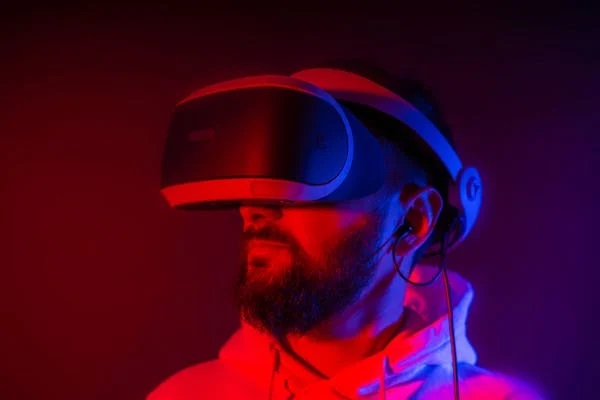3D Games development
3D game development is an ever-evolving field that involves creating interactive digital experiences using three-dimensional graphics. Unlike 2D games, which are flat and lack depth, 3D games offer a more immersive experience by simulating real-world depth and spatial relationships. This complexity requires a solid understanding of various tools, techniques, and technologies.
The Evolution of 3D Game Development
Early Beginnings
The journey of 3D game development began in the early 1980s with rudimentary wireframe models. One of the first notable 3D games was “Battlezone” (1980), which used vector graphics to simulate a 3D environment. Despite its simplicity, it laid the foundation for future developments.
Advancements in the 1990s
The 1990s saw significant advancements with the introduction of textured polygons and more powerful hardware. Games like “Doom” (1993) and “Quake” (1996) revolutionized the industry by providing more detailed and immersive environments. These games also introduced multiplayer capabilities, adding a new dimension to gaming.
The Modern Era
Today’s 3D games boast lifelike graphics, complex physics, and detailed environments. The advent of powerful game engines like Unreal Engine and Unity has democratized game development, allowing indie developers to create high-quality 3D games. Moreover, technologies like virtual reality (VR) and augmented reality (AR) are pushing the boundaries of what is possible.

Essential Tools for 3D Game Development
1. Game Engines
Choosing the right game engine is critical for your project’s success. Here are some popular choices:
Unreal Engine: Known for its stunning graphics and robust tools, Unreal Engine is ideal for high-end game development. It offers a wide range of features, including real-time rendering and advanced physics.
Unity: Unity is renowned for its versatility and ease of use. It supports both 2D and 3D development and is particularly popular among indie developers. Unity’s asset store provides a wealth of resources to speed up development.
Godot: An open-source engine that is gaining popularity due to its flexibility and user-friendly interface. It supports both 2D and 3D development and is completely free.
2. 3D Modeling Software
Creating 3D assets requires specialized software. Some of the most widely used tools include:
Blender: An open-source 3D modeling tool that offers a comprehensive suite of features, including modeling, texturing, and animation. Blender is popular among indie developers due to its zero cost and powerful capabilities.
Autodesk Maya: A professional-grade tool used extensively in the industry for modeling, animation, and rendering. It offers advanced features but comes with a steep learning curve and high price tag.
3ds Max: Another Autodesk product, 3ds Max is favored for its modeling and rendering capabilities. It’s commonly used in game development and architectural visualization.
3. Texturing and UV Mapping Tools
Texturing is crucial for giving 3D models a realistic appearance. Some essential tools include:
Substance Painter: A powerful tool for creating detailed textures and materials. It allows for painting directly on 3D models and offers a wide range of brushes and effects.
Photoshop: While not specifically a 3D tool, Photoshop is widely used for creating and editing textures.
UVLayout: A specialized tool for UV mapping, which is the process of projecting a 2D image texture onto a 3D model.
4. Animation Software
Animating 3D characters and objects requires specialized software. Key tools include:
Maya: Besides modeling, Maya is also a powerful animation tool. It’s used extensively in the film and game industry.
Blender: Blender’s animation tools are robust and improving continuously, making it a viable option for game developers.
MotionBuilder: Another Autodesk product, MotionBuilder is specialized for character animation and motion capture.
Key Techniques in 3D Game Development
1. Modeling
Modeling is the process of creating 3D objects. Techniques include:
Box Modeling: Starting with a basic cube and gradually refining it into the desired shape by adding more vertices, edges, and faces.
Sculpting: Using digital sculpting tools to create highly detailed models, similar to clay sculpting in the real world.
Procedural Modeling: Using algorithms to generate 3D models automatically, often used for creating complex environments like terrains and cities.
2. Texturing
Texturing involves applying images to 3D models to give them color and detail. Techniques include:
Diffuse Mapping: Applying a basic color texture to a model.
Normal Mapping: Adding small details like bumps and dents without increasing the model’s polygon count.
Specular Mapping: Defining how shiny or reflective a surface should be.
3. Rigging and Animation
Rigging is the process of creating a skeleton for a 3D model so that it can be animated. Techniques include:
Bone Rigging: Attaching bones to a model to create a skeleton. Each bone can be animated to move parts of the model.
Inverse Kinematics (IK): A method that allows for more natural movement by calculating the positions of bones automatically.
Blend Shapes: Used for facial animations, allowing for smooth transitions between different expressions.
4. Lighting and Rendering
Lighting and rendering are crucial for creating realistic scenes. Techniques include:
Global Illumination: Simulating how light bounces off surfaces to create realistic lighting.
Ambient Occlusion: Adding shadows in the crevices of objects to enhance realism.
Ray Tracing: A rendering technique that simulates the physical behavior of light to create highly realistic images.



Challenges in 3D Game Development
1. Complexity and Time Consumption
3D game development is inherently complex and time-consuming. Creating detailed models, textures, and animations requires significant time and skill. This complexity often leads to longer development cycles compared to 2D games.
2. Performance Optimization
Ensuring that a game runs smoothly on various hardware configurations is a major challenge. Techniques like level of detail (LOD), texture streaming, and efficient coding practices are essential for optimization.
3. Cross-Platform Development
Developing a game that works seamlessly across different platforms (PC, console, mobile) requires careful planning and execution. Each platform has its own set of requirements and limitations, making cross-platform development a challenging task.
4. Keeping Up with Technology
The rapid pace of technological advancement means developers must continuously update their skills and tools. Staying current with the latest trends and technologies is essential for creating cutting-edge games.
Trends in 3D Game Development
1. Virtual Reality (VR) and Augmented Reality (AR)
VR and AR are transforming the gaming experience by providing immersive environments and interactive gameplay. Games like “Beat Saber” and “Pokémon Go” have showcased the potential of these technologies.
2. Procedural Generation
Procedural generation involves using algorithms to create game content dynamically. This technique is used to generate vast, varied environments and ensures unique gameplay experiences. Notable examples include “No Man’s Sky” and “Minecraft.”
3. Artificial Intelligence (AI)
AI is playing an increasingly important role in 3D game development. Advanced AI techniques are used to create intelligent NPCs (non-player characters), realistic enemy behavior, and adaptive gameplay.
4. Cloud Gaming
Cloud gaming allows players to stream games directly to their devices, eliminating the need for powerful hardware. Services like Google Stadia and NVIDIA GeForce Now are leading this trend, making high-quality games accessible to a wider audience.
Future Prospects in 3D Game Development
1. Enhanced Realism
As hardware continues to improve, the level of realism in 3D games will also increase. Advanced rendering techniques, more detailed models, and realistic physics will create even more immersive experiences.
2. Integration of AI and Machine Learning
The integration of AI and machine learning will enable more sophisticated and responsive game environments. AI-driven game design could adapt to players’ styles and preferences, creating personalized experiences.
3. Improved Development Tools
The continuous improvement of development tools will make it easier for developers to create high-quality games. Tools that simplify complex tasks, automate repetitive processes, and enhance collaboration will become increasingly important.
4. Increased Accessibility
Efforts to make games more accessible to people with disabilities are gaining momentum. Features like customizable controls, subtitles, and visual aids will become standard, ensuring that more people can enjoy games.

3D game development is a complex but rewarding field that offers endless opportunities for creativity and innovation. By mastering the essential tools and techniques, staying current with industry trends, and embracing new technologies, developers can create immersive and engaging 3D games. Whether you’re a seasoned developer or just starting out, the world of 3D game development holds vast potential for those willing to dive in and explore.
